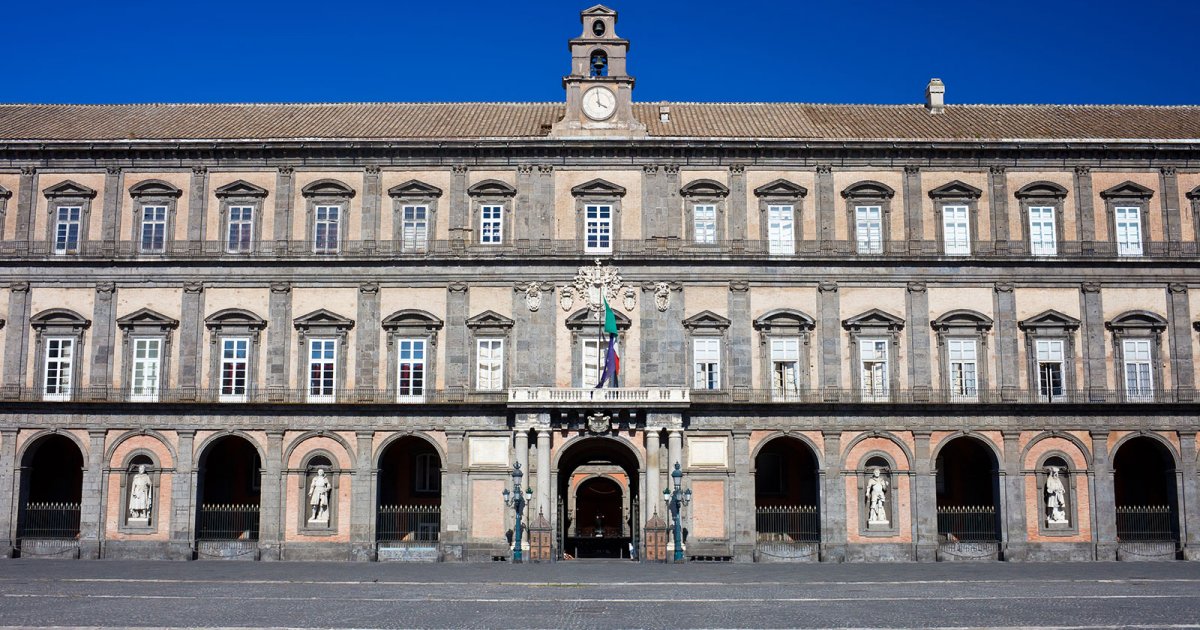PIAZZA PLEBISCITO, Royal Palace Exterior
 Language: English / USA
Language: English / USA
Now I'd like to tell you about the Royal Palace, whose long main façade faces Piazza Plebiscito: it is one of the most important buildings in the political history of Naples, which is linked to Spanish administration first with the viceroys, or royal officials, and then with the reigning dynasty of the Bourbons.
During the second half of the sixteenth century, the Spanish viceroys developed urban and architectural initiatives that would leave an impression on the city, for example the famous "Spanish Quarter" near the historic center, which served as the residence of military troops. The idea to build the palace came about in the mid-1500s from the need to have a seat worthy of the rank of the crown of Spain, where they could host King Philip III, who however died without having ever seen Naples.
The Royal Palace began construction in the year 1600 based on the design by the Ticino architect Domenico Fontana, the great protagonist of Rome's urban renewal in the previous years. As you can see, the building fully takes advantage of the square's width and was perfect for military parades; the entire palace was conceived as a grandiose, late-Renaissance complex. It soon became a reference point for this area's development, which was reflected shortly after by the opening of the University at the opposite end of Via Toledo, in the palace that's now home to the National Archaeological Museum.
The façade has two upper floors and a portico that opens up onto a courtyard of honor, or a three-sided main courtyard. Behind the palace and towards the sea you can visit the beautiful gardens that are connected with the Castel Nuovo by a seventeenth-century bridge that crosses over the old moat. Although over the centuries the palace has undergone a number of restorations and modifications, it has substantially maintained its original appearance, which was further compromised during the Second World War by bombing and the fact that it was used as an official site of the allied forces. The most affected part of the building was the façade, which was originally completely crossed by a portico. In the 1800s the niches began to be used for the statues of the sovereigns who had ruled Naples and southern Italy.
FUN FACT: of all the statues of kings made at the end of the nineteenth century, the most famous is that of Charles V by the Neapolitan sculptor Vincenzo Gemito. The artist was literally obsessed with the figure of the king; at night he heard it murmur and move, and he even wound up flinging stones against the statue. So Gemito wound up in a group home for mental disorders, which he fled from after two years of residence.



